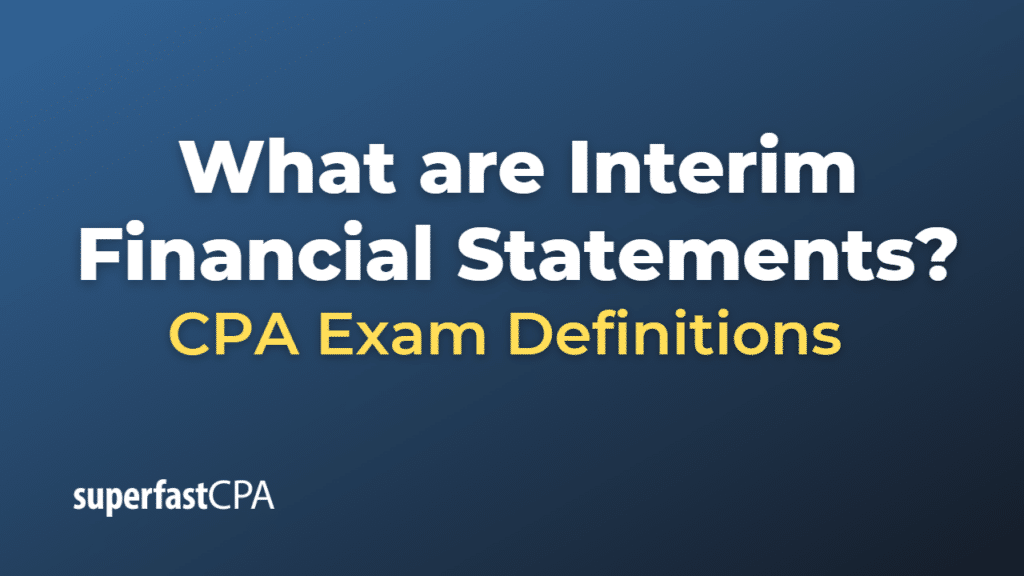Interim Financial Statements
Interim financial statements are reports that provide an update on a company’s financial status during a fiscal year but do not cover the full year. They are typically prepared for periods of less than a year, such as quarters or half-years.
These statements can include:
- Interim balance sheets: This provides a snapshot of the company’s assets, liabilities, and shareholders’ equity at a specific point in time during the fiscal year.
- Interim income statements: This documents the revenues, expenses, and profits or losses for a certain period within the fiscal year.
- Interim cash flow statements: This reports the company’s cash inflows and outflows from operating, investing, and financing activities for a period within the fiscal year.
- Interim statement of changes in equity: This shows the changes in a company’s equity during a period within the fiscal year.
Interim financial statements can help investors, creditors, and other stakeholders to understand a company’s current financial condition and performance. They can provide more timely information than annual financial statements, enabling stakeholders to make quicker decisions based on the most recent data.
However, interim financial statements might not be as comprehensive or accurate as annual financial statements. They are often unaudited and may rely on estimates more heavily, due to the shorter period of time and the need to generate these statements quickly. As such, while they provide valuable insights, they should be used in conjunction with other financial information for a complete understanding of a company’s financial situation.
Example of Interim Financial Statements
Here’s a simplified hypothetical example of an interim financial statement for a company:
Company: TechFlow Inc. Interim Period: Quarter 1, 2023
Interim Income Statement
| Item | Amount ($) |
|---|---|
| Revenue | 500,000 |
| Cost of Goods Sold (COGS) | -200,000 |
| Gross Profit | 300,000 |
| Operating Expenses | -100,000 |
| Operating Income | 200,000 |
| Interest Expense | -10,000 |
| Pre-tax Income | 190,000 |
| Income Tax | -38,000 |
| Net Income | 152,000 |
Interim Balance Sheet
| Item | Amount ($) |
|---|---|
| Assets | |
| Cash | 100,000 |
| Accounts Receivable | 50,000 |
| Inventory | 50,000 |
| Total Assets | 200,000 |
| Liabilities | |
| Accounts Payable | 30,000 |
| Short-term Debt | 20,000 |
| Total Liabilities | 50,000 |
| Equity | |
| Common Stock | 100,000 |
| Retained Earnings | 50,000 |
| Total Equity | 150,000 |
| Total Liabilities + Equity | 200,000 |
Interim Cash Flow Statement
| Item | Amount ($) |
|---|---|
| Operating Activities | |
| Net Income | 152,000 |
| Depreciation | 10,000 |
| Changes in Working Capital | -20,000 |
| Net Cash from Operating Activities | 142,000 |
| Investing Activities | |
| Capital Expenditures | -50,000 |
| Net Cash used in Investing Activities | -50,000 |
| Financing Activities | |
| Dividends Paid | -30,000 |
| Net Cash used in Financing Activities | -30,000 |
| Net Change in Cash | 62,000 |
| Cash at Beginning of Period | 40,000 |
| Cash at End of Period | 102,000 |
Remember, this is a very simplified example, and actual financial statements can be much more complex. Also, different companies may categorize some items differently based on their unique accounting practices.














